MikroTik CRS326-4C+20G+2Q+RM Switch Internal Hardware Overview
When we open the switch, we see a lot going on.
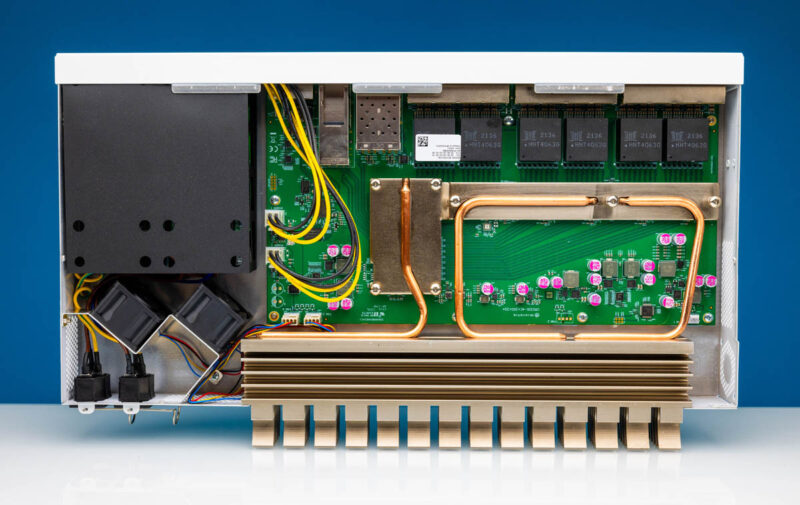
Inside, we have the Marvell Prestera 98DX8332 switch chip with a dedicated Qualcomm QCA9531 MIPS processor. There is also an elaborate cooling solution.
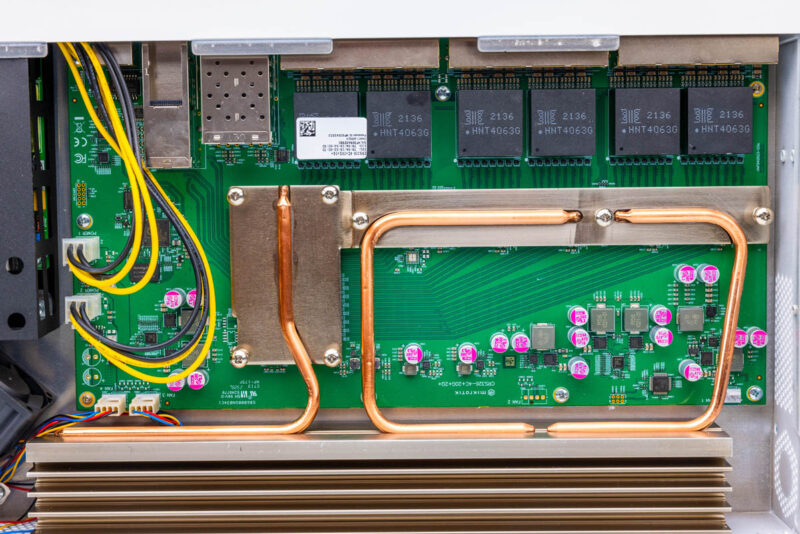
Here is the Qualcomm QCA9531 single fore 650MHz management processor.
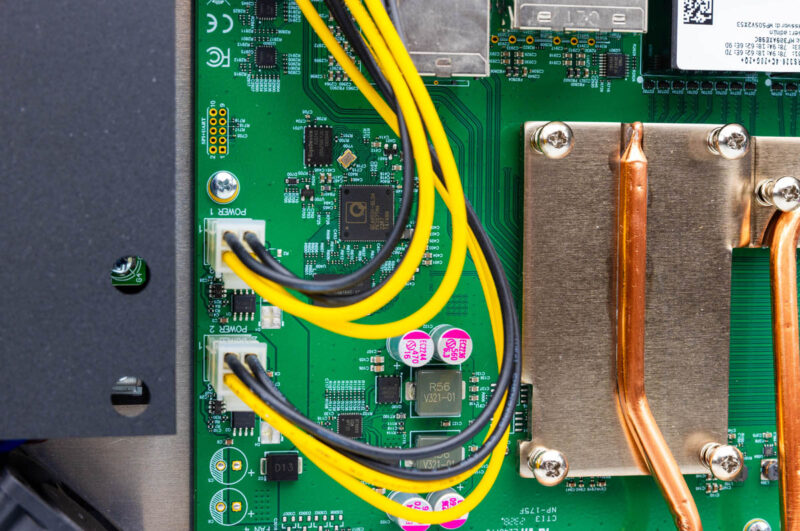
While we are only the subject, here is the block diagram for the switch.
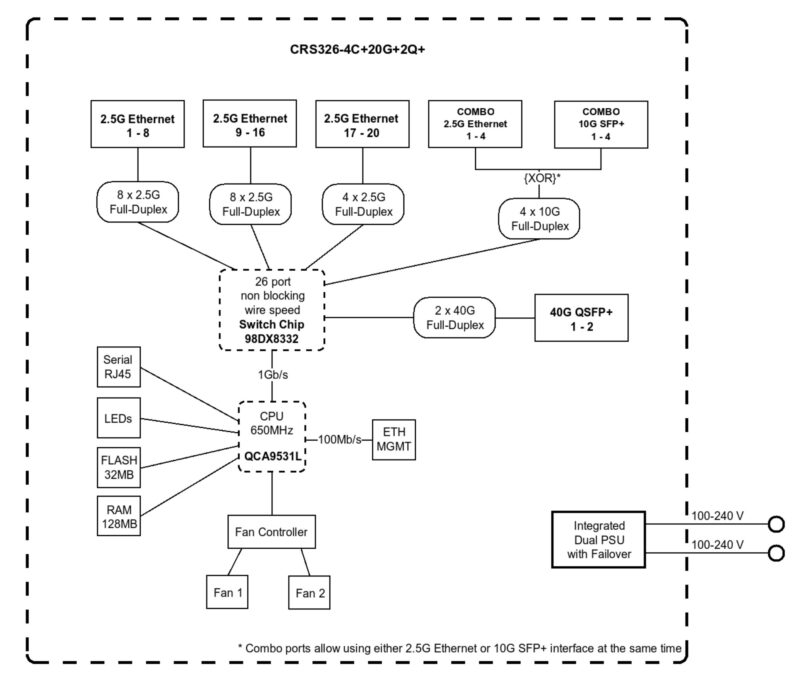
Something to keep in mind here is that if there is a feature being used that is not offloaded by the 98DX8322 switch chip, then the traffic goes over the 1Gbps link to the 650MHz MIPS CPU, and then likely back to the switch chip.
Next, let us talk cooling. The first thing to notice here is that the heatsink at first glance is totally weird. More than half of the heatsink is inside the chassis.
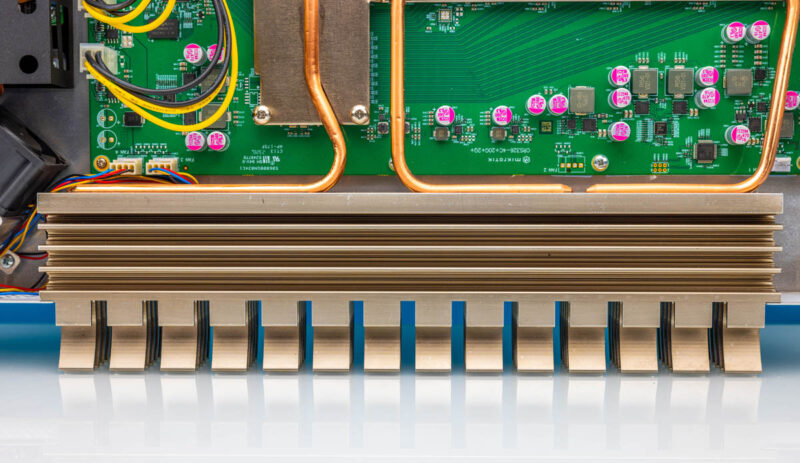
Heatpipes transfer heat from the switch chip and PHYs to the big heatsink in the rear. This is not documented, but after seeing this design, here is our hot take. We think the heatsink was originally designed to have a fan to the left of the photo below, where the exhaust would be on the unpopulated fan vent.
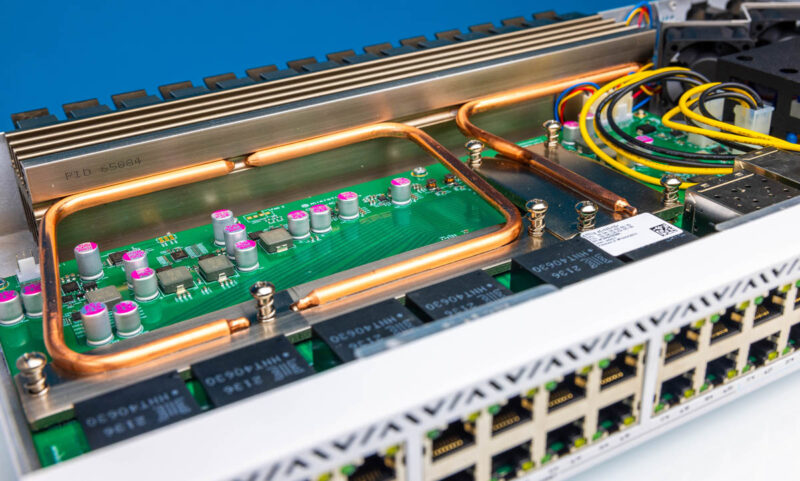
It feels like that was the design, then MikroTik realized they did not need the fan, so they did not populate it. At the same time, there is a fan header and enough room to put a fan there if you are so inclined.
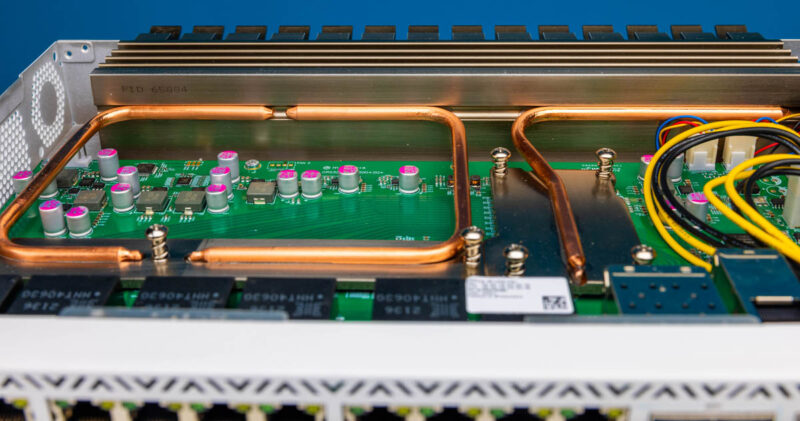
If you are feeling disappointed as a fan enthusiast, do not worry; this is a “fanless-adjacent” system, not a fanless system. There are two fans in front of the two internal power supplies. These power supplies are not hot-swappable, but at least it is a step up from a single internal power supply.
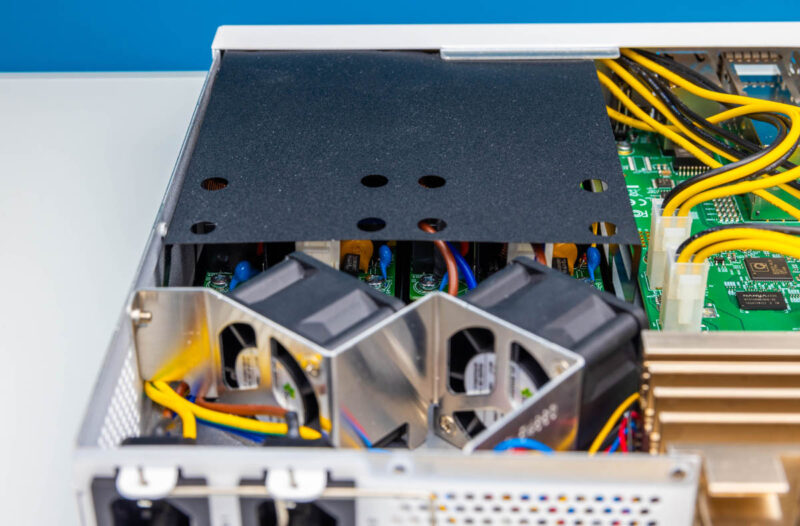
The fans are angled towards the rear of the chassis. Leading to our theory that the unpopulated other side was desinged to have a fan, one can see the internal heatsink fins. At the end of the fins, there is an airflow guide for the fans but there is direct access to the rear vent from the heatsink side.
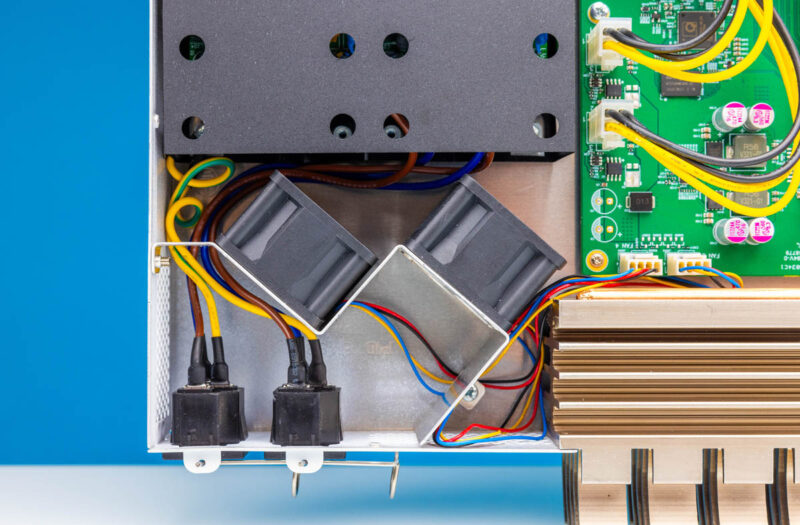
Inside the switch, we also see the backup default password sticker. That can be useful if the outer sticker gets damaged.
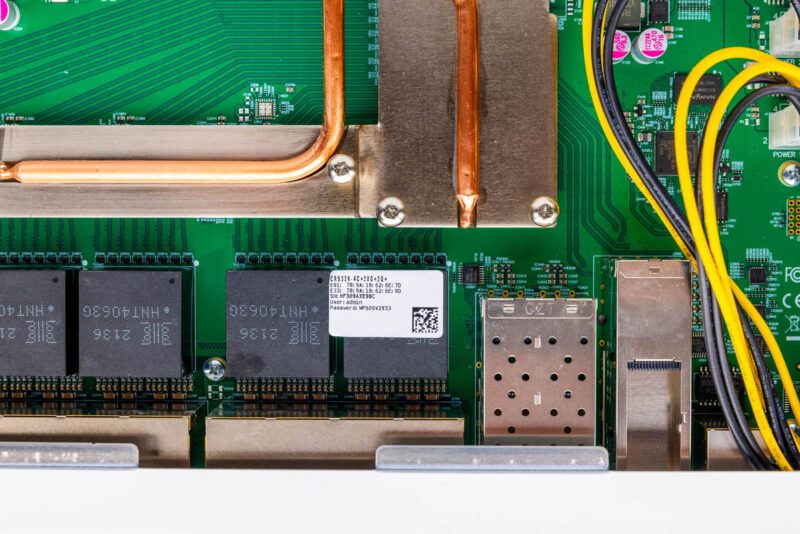
Next, let us get to MikroTik’s management.


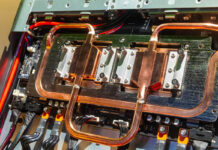

There are a tremendous number of spelling errors in this article!
Does anyone know what happened to the YouTube review of this switch? It appears to have been set to private.
What does “fanless-adjacent” even mean? It either has fans, or it doesn’t. This has fans. It is an actively cooled system.
It is strange no one seems to consider the TP-Link TL-SG3428X-M2 – 24 2.5GbE ports with PoE and 4 SFP+. They’re managed and very cheap – I got mine for just over £412 plus duty.
Sorry, XP and XPP models for PoE.
@Parallax: I got burned on TP-Link PoE and never went back. The unit I had did not galvanically isolate the DC output (which IIRC is part of the 802.af spec), but put -48VDC on the GND PoE conductor (and mains-referenced GND on the PoE positive connector). So when I plugged in any PoE device that had a mains-powered monitor connected, it would connect PoE GND to mains GND via the HDMI cable, which shorted out the switch’s power supply and the whole switch would shut off.
Never went back to any TP-Link PoE product after that experience.
I would prefer they drop the 40GbE and the price. Or leave off the 40GbE and add 4x more SFP+ for the same or similar price.
With the 40g ports, you can split them into four 10g, If my math is correct that is:
Twelve 10g
Twenty 2.5g
I am a huge Mikrotik fan but damn, those model numbers need to be shorter.
Great information
I think that extra fan location is for future POE models
Thanks for the entire STH family
@Art C They’re actually informative:
CRS326-4C+20G+2Q+RM
CRS = Cloud Router Switch (router/Switch modes)
326 = 32 ports (6 iirc is level up support for routerOS or something)
4C = 4 combo ports
20G = 20 2.5G ethernet ports
2Q = 2 QSFP+ ports
RM = Router mode?
For that price, I’d have expected 10GbE capable ports and PoE.
@Evan +RM means Rack Mount. +IN is their desktop version
The problem with reviewing so many firewalls/appliances from AliExpress is that it skews expectations on pricing. I don’t particularly think $900 is bad for this switch and it’s on my short list of upgrades for my rack. For me, having Chinese unbranded equipment is an absolute no go for my supply chain security needs, so I’m willing to pay a bit more.
I noticed in this review you did not test out the newer L3 Hardware Offloading. If that is enabled it should offer full wire speed on all of the ports. The L3 Hardware Offloading is offered in the newer RouterOS v7 releases. I would be interested in those figures.